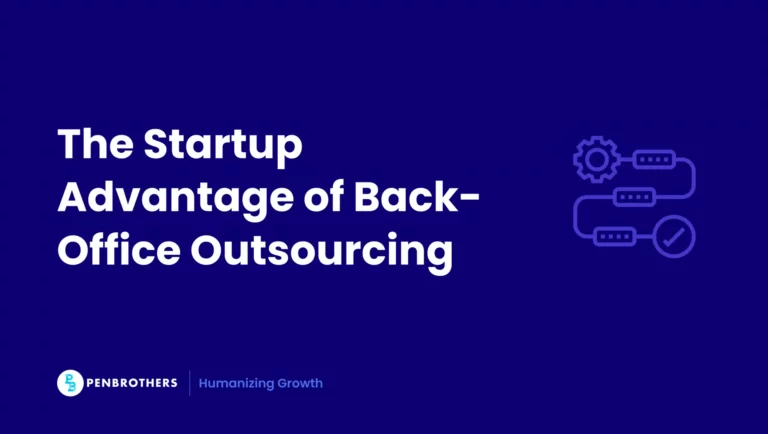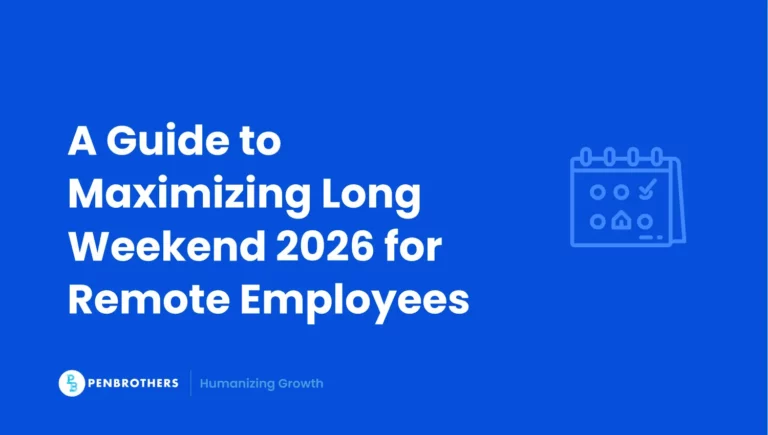Companies generate endless reports, yet leaders still make decisions with limited clarity. The missing link is often a business analyst (BA), the role that turns raw data into insight and strategy into execution.
This guide shows you how to hire a BA who creates real business impact, covering must-have skills, interview questions, salary benchmarks, and the hiring mistakes to avoid.
What Does a Business Analyst Actually Do?
At its core, the BA role is about bridging the gap between business goals and the data, systems, or processes that make them possible.
Key responsibilities include:
- Gathering and translating business requirements into actionable solutions
- Identifying inefficiencies and recommending process improvements
- Creating financial models and forecasts that support executive decisions
- Turning complex data into visualizations leaders can actually use
How they differ from related roles:
- Product Managers define what to build, while BAs analyze why and how.
- Systems Analysts focus on IT architecture, whereas BAs focus on business outcomes.
- Data Analysts dig into numbers, but BAs contextualize findings into business decisions.
Impact of a strong BA:
- Efficiency gains across departments
- Reduced costs through better resource allocation
- Clearer prioritization of initiatives that drive ROI
When Do You Really Need to Hire a Business Analyst?
Many founders delay hiring a BA, thinking reporting tools are enough. But here’s the reality: tools only show you what is happening, not why.
Signs you’re ready for a BA:
- Your business has multiple systems that don’t “talk” to each other
- Teams argue over whose data is correct
- Projects stall because requirements are vague or misunderstood
- Leadership spends more time debating metrics than acting on them
Risks of hiring too late:
- Missed opportunities to spot growth bottlenecks early
- Inefficient use of capital and talent
- Poor investments in tools or processes that don’t align with business goals
Use cases:
- Early-stage startups: A BA helps validate product-market fit and prioritize resources.
- Scaling companies: A BA builds processes and KPIs that prevent chaos.
- Enterprises: BAs bridge silos across functions and ensure multi-million-dollar projects succeed.
Skills and Qualities to Look For
The right BA blends technical expertise with people skills.
Core technical skills:
- Requirements gathering and process mapping
- SQL and data visualization (Power BI, Tableau, Looker)
- Financial modeling and forecasting
- Business case preparation
Soft skills that elevate impact:
- Critical thinking and problem-solving
- Ability to challenge assumptions respectfully
- Stakeholder management and influence without authority
- Strong communication (simplifying complex data for non-technical leaders)
Preferred extras:
- Industry certifications (CBAP, PMI-PBA, Agile Analysis)
- Domain experience (finance, healthcare, SaaS, e-commerce)
- Familiarity with Agile/Scrum frameworks
Writing a Job Description That Attracts the Right BAs
Generic job postings will only get you generic candidates. A strong BA job description should:
Key elements to include:
1. Lead with business outcomes, not tasks.
Instead of describing the role as “preparing monthly reports,” highlight how the BA will influence decisions. For example:
- “Drive insights that shape market expansion strategies and optimize resource allocation.”
2. Separate must-have and nice-to-have skills.
Overstuffed requirements discourage strong applicants, especially those from non-traditional backgrounds. Keep the must-haves focused on core BA skills (requirements gathering, stakeholder management, data analysis). List certifications, specific software, or sector experience as “preferred.”
3. Tailor to your company’s growth stage.
- Startups: Emphasize adaptability and broad problem-solving. The BA may wear multiple hats and move fast with limited resources.
- Scaling companies: Stress process design, cross-functional collaboration, and KPI development.
- Enterprises: Focus on governance, stakeholder alignment, and managing complex, multi-system environments.
- Show problem-solving, not just reporting.
The best candidates are drawn to challenges. Frame your JD around the opportunity to uncover inefficiencies and propose solutions that drive growth.
Sample phrasing to use:
“We are seeking a Business Analyst who will go beyond reporting to identify root causes of inefficiencies, propose actionable solutions, and support leadership with data-driven recommendations. This role is critical to ensuring our strategy translates into measurable impact.”
Interview Questions That Separate “Good” from “Great”
The best candidates show they can think, not just execute.
1. Behavioral questions
These uncover how candidates have acted in real situations, revealing judgment, resilience, and influence skills.
- “Tell me about a time you uncovered an insight that leadership initially resisted but later acted on. How did you gain buy-in?”
- “Describe a situation where different stakeholders had conflicting requirements. How did you resolve it and keep the project on track?”
- “Give an example of when you had incomplete information but still had to make a recommendation. What was your process?”
2. Scenario-based tests
These simulate the challenges they’ll face in your company and reveal problem-solving under pressure.
- “Customer churn has spiked 15% in the last quarter. How would you identify the root cause and prioritize next steps?”
- “You receive messy, incomplete datasets from two different departments. Walk us through how you would clean and validate the data before presenting it to leadership.”
- “Imagine our product launch is delayed due to misaligned processes. What steps would you take to diagnose bottlenecks and recommend solutions?”
3. What to look for in strong answers
- Clear, structured thinking (problem → analysis → solution → outcome)
- Ability to balance technical rigor with business relevance
- Willingness to ask clarifying questions instead of rushing to answer
- Evidence of collaboration and influencing stakeholders without formal authority
4. Red flags to watch out for
- Candidates who rely solely on tools and templates without showing curiosity
- Answers that are overly tactical, with little connection to business outcomes
- Avoidance of conflict resolution or examples where they challenged leadership
- Inability to explain their thought process clearly to non-technical stakeholders
Cost and Hiring Models: In-House vs Offshore vs Contract
The cost of hiring a business analyst varies widely depending on geography, employment model, and the level of responsibility you expect them to take on. Understanding both salary benchmarks and total cost of ownership will help you choose the right approach.
Salary benchmarks (2025):
- United States: $85,000 – $120,000/year
- United Kingdom: £50,000 – £75,000/year
- Australia: AUD 90,000 – AUD 120,000/year
- Philippines (offshore talent): $15,000 – $25,000/year (Penbrothers salary guide)
These numbers highlight the growing appeal of offshore business analysts, particularly in markets like the Philippines where talent quality remains high but salaries are significantly lower.
Beyond salary: the total cost of hiring
Hiring a BA isn’t just about base pay. Companies often underestimate the hidden costs, which can add 20–30% to total expenses:
- Onboarding and training: Aligning new hires with company processes and tools
- Software and licenses: Business intelligence, project management, and collaboration platforms
- Ongoing support and professional development: Certifications, conferences, and skills training to keep BAs relevant in evolving markets
Hiring models to consider:
- In-House Business Analyst
- Pros: Direct control, cultural alignment, deeper institutional knowledge
- Cons: Highest cost, slower hiring cycles, limited scalability if you need to expand quickly
- Contract/Freelance Business Analyst
- Pros: Flexible, faster to onboard, ideal for short-term projects or peak demand
- Cons: Lower knowledge retention, potential inconsistency in quality, weaker integration with internal teams
- Offshore Business Analyst Talent
- Pros: Cost-efficient, highly skilled, scalable with minimal overhead. Offshore BAs, especially from talent hubs like the Philippines, are known for adaptability, English fluency, and cross-industry experience. Many global companies now outsource high-value BA roles to maximize efficiency【Penbrothers outsourcing examples†source】.
- Cons: Requires a reliable partner to ensure smooth integration, strong onboarding, and cultural fit
Common Hiring Mistakes (and How to Avoid Them)
Even experienced hiring managers misstep when it comes to bringing business analysts on board. These errors often lead to misaligned expectations, underperforming hires, or wasted budgets. Here are the most common pitfalls and how to avoid them:
1. Confusing the BA role with project managers or data analysts
- The mistake: Companies often assume that anyone who manages projects or analyzes data can serve as a business analyst. In reality, project managers focus on timelines and execution, and data analysts focus on numbers and patterns. A BA connects the two, translating business needs into solutions and ensuring insights drive decisions.
- How to avoid it: Define the role clearly in your job description and during interviews. Ask candidates about situations where they influenced decisions, not just managed tasks or produced reports.
2. Over-emphasizing technical tools while ignoring business acumen
- The mistake: Some companies prioritize candidates who are power users of SQL, Tableau, or Power BI, but overlook whether they can ask the right business questions. A technically skilled hire who can’t challenge assumptions may generate attractive reports that don’t actually guide better decisions.
- How to avoid it: Balance technical assessments with problem-solving exercises. For example, present a messy dataset and ask how they’d turn it into a recommendation for the executive team. Look for clarity, logic, and business relevance in their answers, not just technical outputs.
3. Ignoring stakeholder alignment and cultural fit
- The mistake: A BA may be brilliant with data but ineffective in practice if they can’t build trust across departments. Business analysts succeed when they can manage conflicting requirements, mediate between IT and business teams, and influence leaders without formal authority.
- How to avoid it: During interviews, include stakeholders from multiple departments and test collaboration skills. Ask about times they’ve resolved conflicts, pushed back on leadership respectfully, or gained buy-in for an unpopular insight.
Red Flags During the Hiring Process
1. Candidates who avoid asking clarifying or “tough” questions
- Why it matters: A strong BA doesn’t just accept requirements at face value. They dig deeper, challenge vague assumptions, and uncover the “why” behind requests. Candidates who never push back may lack the confidence or critical thinking needed to influence decisions.
- What to look for instead: Candidates who naturally ask follow-up questions during the interview about business goals, priorities, or how success is defined.
2. A narrow focus on producing reports without challenging assumptions
- Why it matters: Reporting is the baseline. If a candidate only talks about generating dashboards or visualizations, they may lack the strategic perspective to translate data into actionable recommendations. This often leads to beautifully designed reports that don’t change business outcomes.
- What to look for instead: Examples where the candidate’s analysis directly led to a decision, process change, or measurable business improvement.
3. No evidence of cross-functional collaboration
- Why it matters: Business analysts work across departments, finance, operations, IT, sales, and beyond. If a candidate can’t demonstrate collaboration with diverse teams, they may struggle to build consensus or align stakeholders.
- What to look for instead: Stories where the BA acted as a bridge between conflicting groups or influenced outcomes without direct authority.
Other subtle red flags to note:
- Overemphasis on tools instead of problem-solving
- Lack of interest in the company’s industry or business model
- Inability to explain complex insights in plain language
Final Thoughts
Hiring a business analyst is not about filling a reporting gap. It’s about finding someone who can connect strategy to execution, challenge leadership when necessary, and uncover the opportunities hidden in your data.
Companies that invest early in strong BA talent as part of the labor market are better equipped to scale without chaos, avoid costly missteps, and future-proof their decision-making.
If you’re exploring global hiring options, consider how offshore business analysts from the Philippines can deliver enterprise-level impact at startup-friendly costs. See how US companies outsource to the Philippines and explore salary benchmarks to start building your business case.






